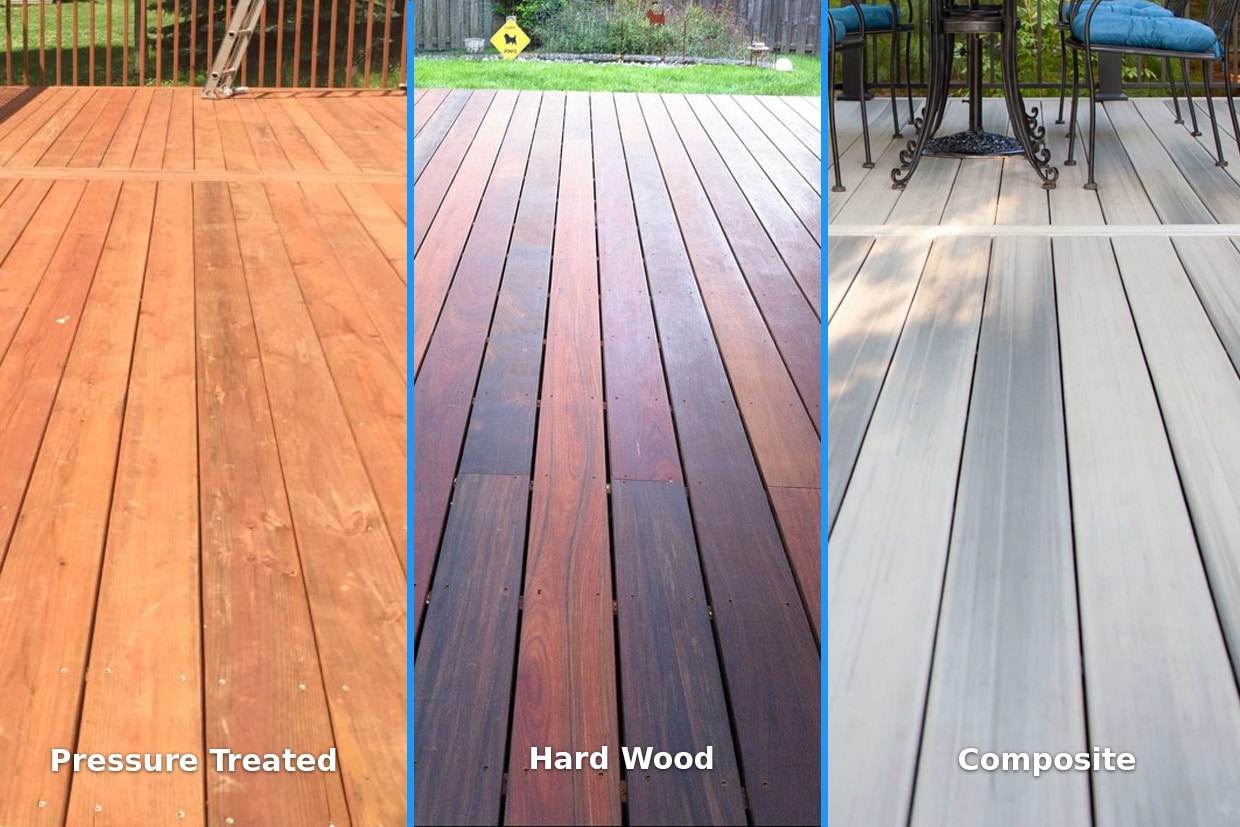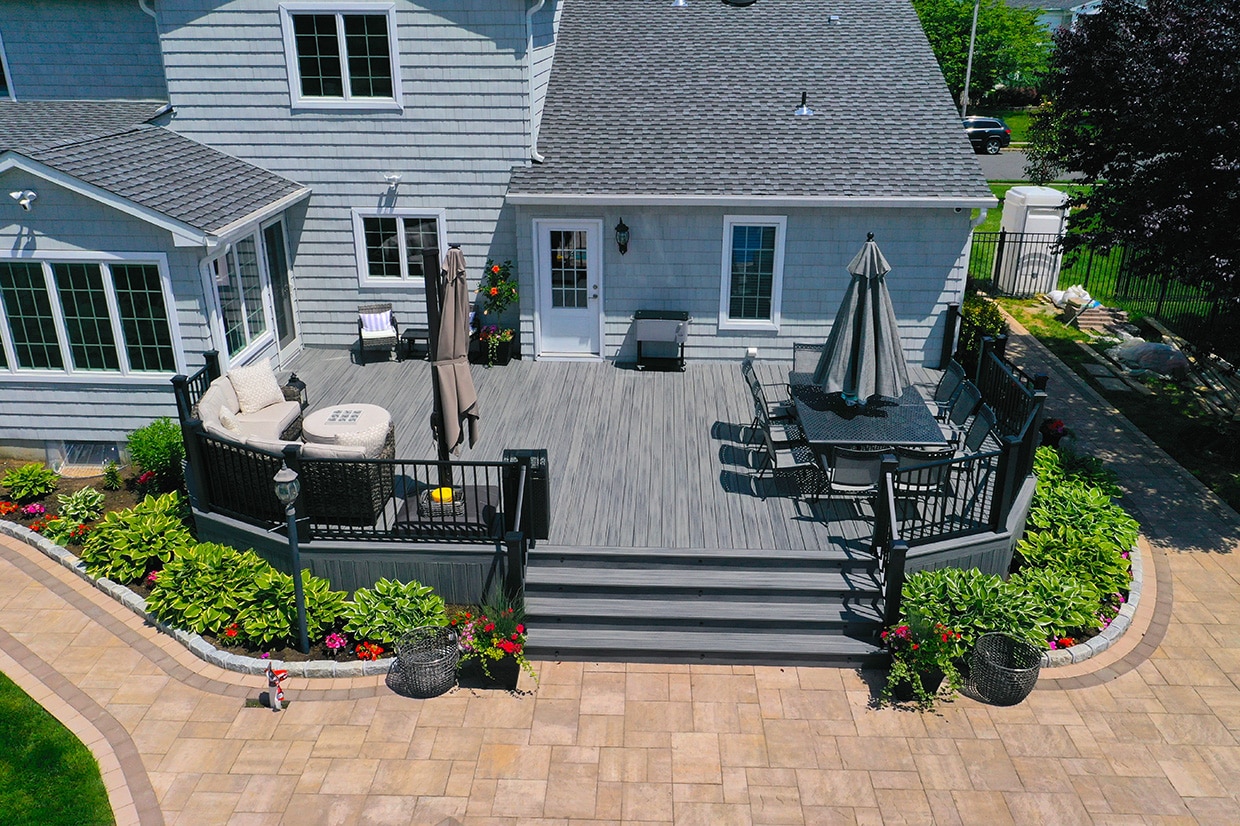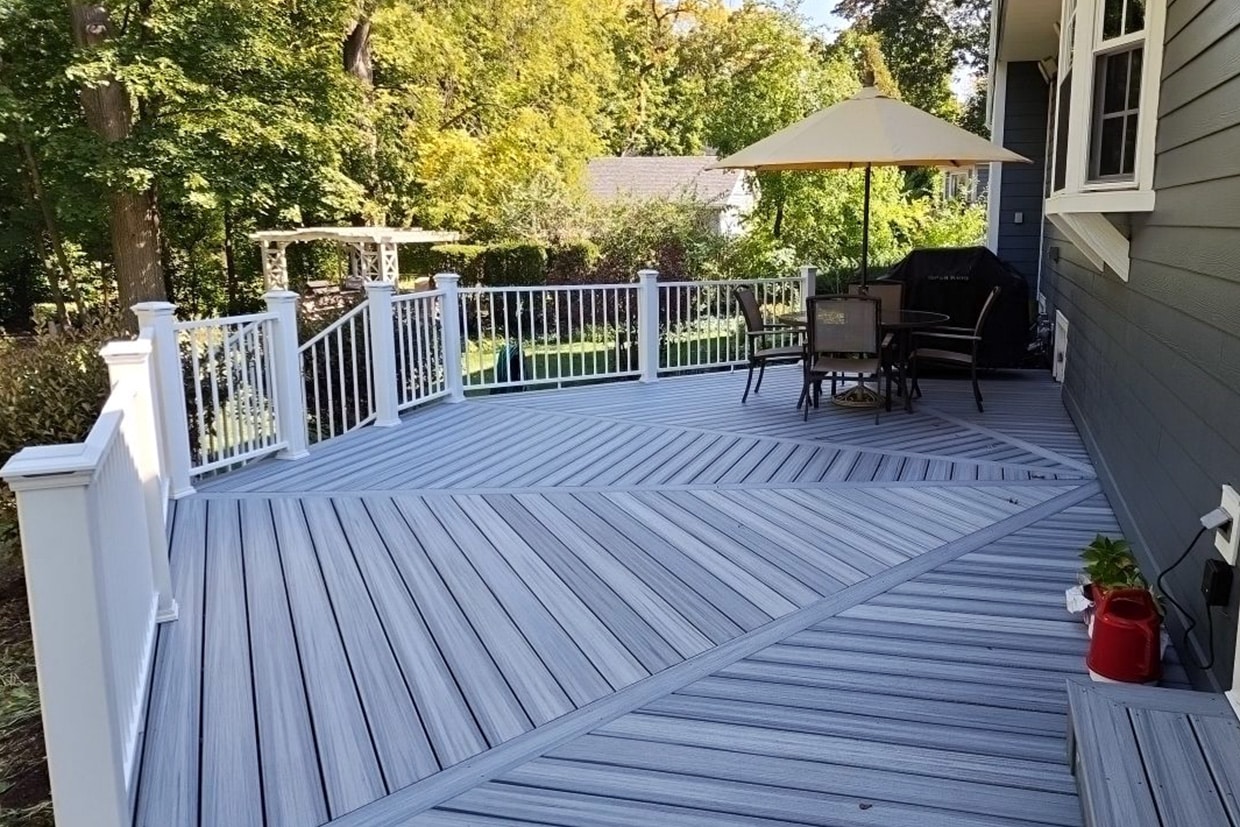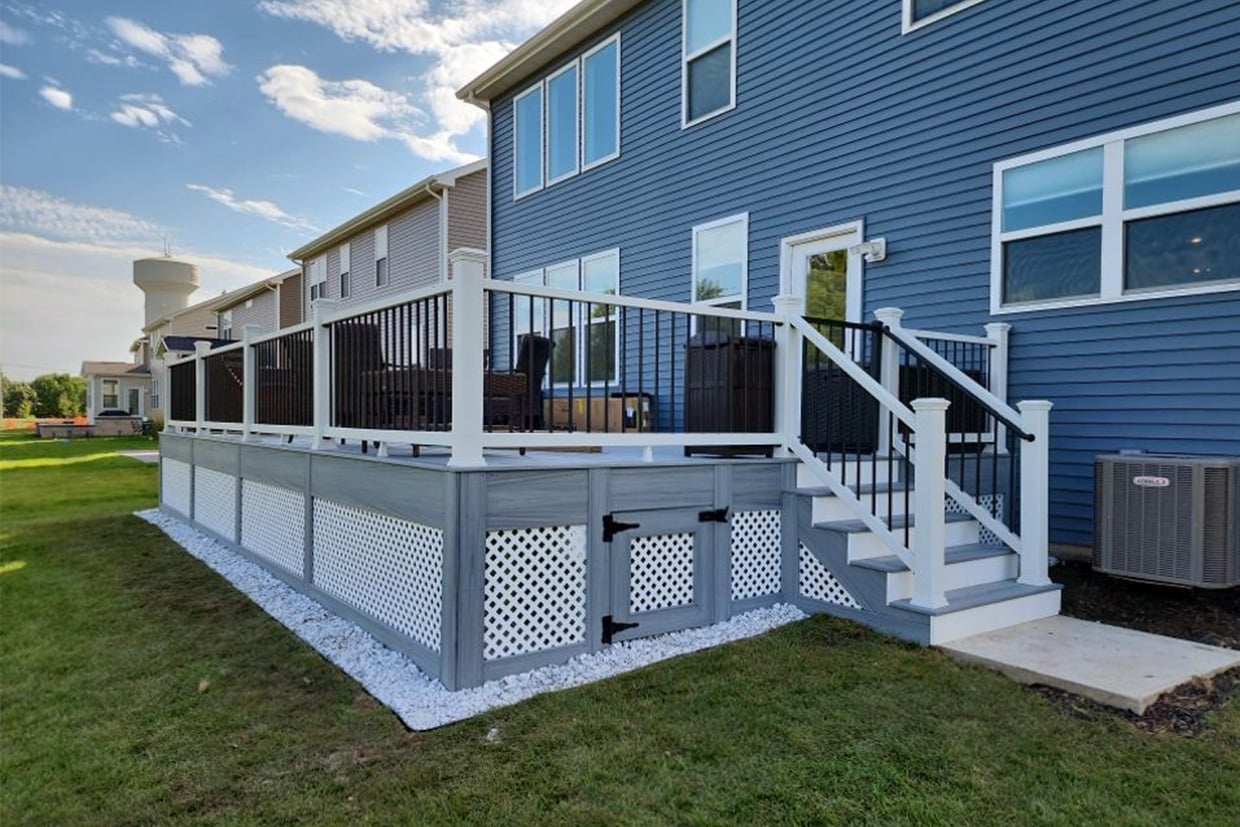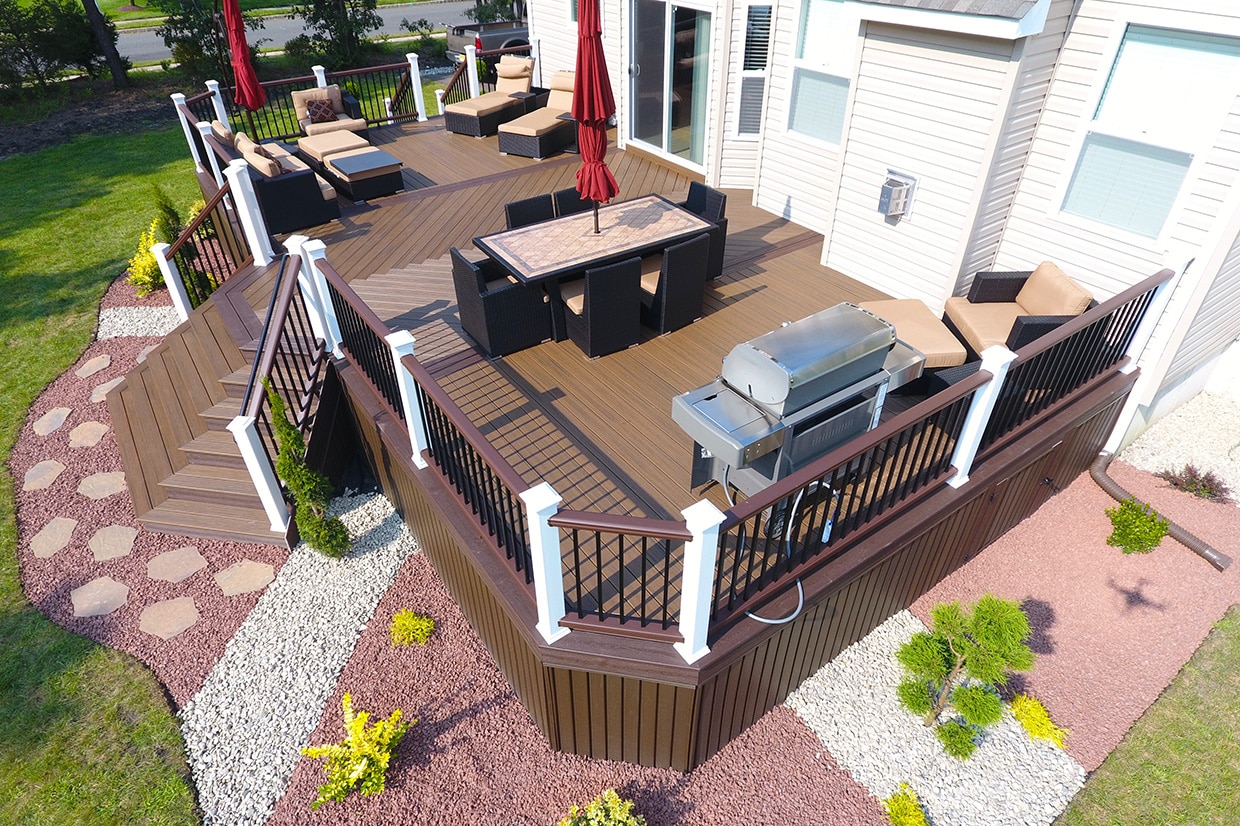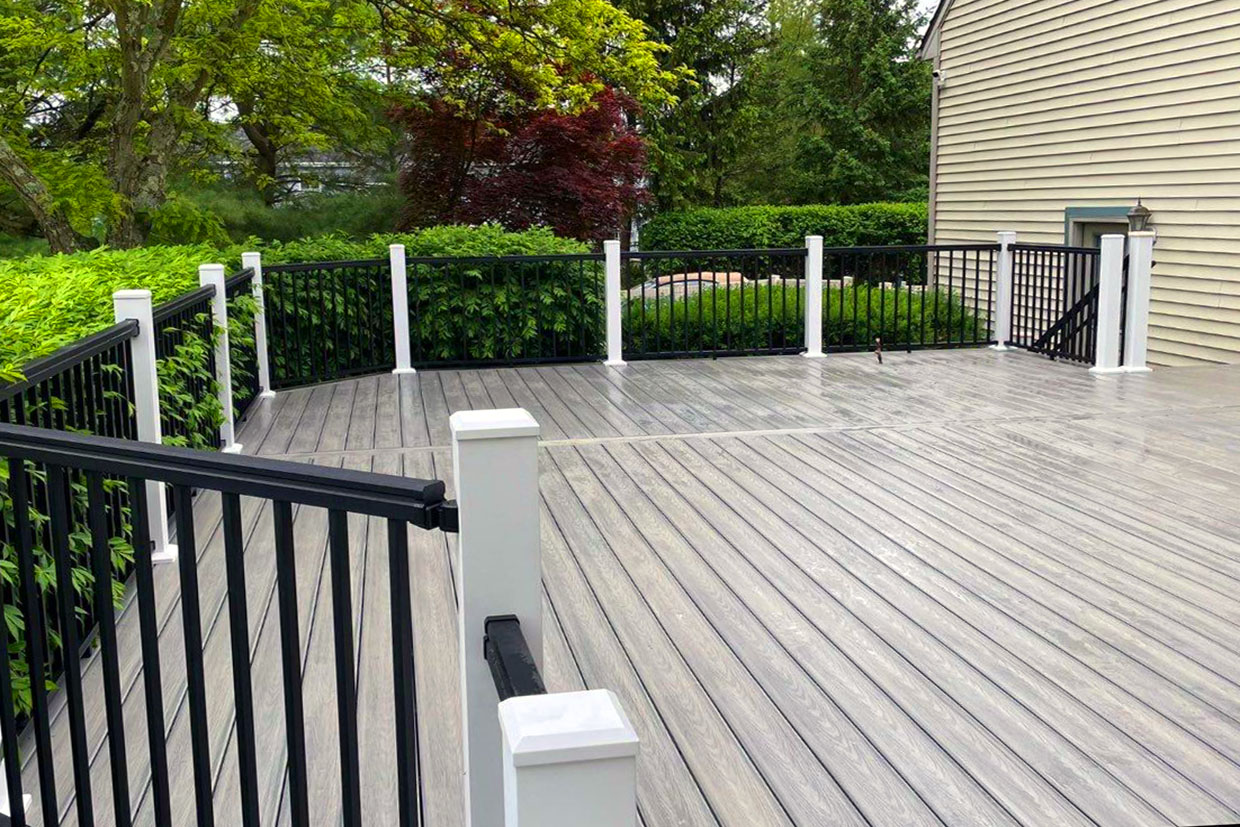
How to Choose Affordable Decking Material for Your Next Project
Building your dream deck doesn’t have to drain your pocketbook. At Deck Guardian, New Jersey’s premier deck builder, we understand the importance of selecting quality decking materials that align with your budget. Especially in today’s economy. Finding the right balance between cost and quality is possible, and with our expert advice, you’ll learn how to choose affordable decking materials that offer both durability and affordability.
Whether you’re considering the least expensive wood options or exploring cost-effective composite decking, Deck Guardian has the insights to help you make informed decisions. Let’s dive into how you can achieve a beautiful deck without compromising on quality or breaking the bank.
Understanding Affordable Decking Materials
When planning to build a deck, selecting the right material is going to set the tone for the expenses of the project. Each material offers unique benefits and challenges, especially when it comes to cost and longevity. Here’s an overview of the most popular decking materials– wood, composite, and PVC– so you can make an informed decision for your needs and budget.
1. Wood Decking
Common choices include pressure-treated lumber, cedar, and redwood. Exotic hardwoods like ipe also fall into this category but at a higher price point.
- Cost: Wood is often the least expensive option upfront, especially pressure-treated lumber. Cedar and redwood are mid-range in price, while hardwoods like ipe are on the higher end.
- Longevity and Maintenance: While wood is cost-effective, it requires regular maintenance such as staining, sealing, and sanding to prevent decay and maintain appearance. Lifespan can vary greatly—from 10 to 50 years—depending on the type of wood and maintenance efforts.
2. Composite Decking
Composite boards are made from a mix of wood fibers and recycled plastics, making them an eco-friendly choice.
- Cost: Initially more expensive than wood, composite decking offers a middle ground in pricing between the cheapest woods and high-end materials.
- Longevity and Maintenance: Composite decking is celebrated for its durability and low maintenance. It does not require staining or sealing and is resistant to rot, warping, and pests. Most brands offer warranties of 25 years or more, making it a wise investment over time.
3. PVC Decking
Pure plastic decking made from polyvinyl chloride (PVC) without any wood fibers.
- Cost: PVC is typically the most expensive of the three options, but the investment might be justified by its benefits.
- Longevity and Maintenance: PVC decks are extremely low maintenance, requiring only occasional washing to keep them looking new. They are also highly resistant to moisture, stains, and fading. Like composite, PVC often comes with long-term warranties up to 30 years or more.
Choosing between these materials often comes down to balancing your initial budget with your willingness to maintain the deck over its lifetime. Wood, while cheaper upfront, demands ongoing maintenance which can add up in costs and effort. Composite and PVC, though higher in initial investment, minimize future expenses and labor with their durability and low maintenance needs.

Advantages of Composite Decking
Composite decking has become increasingly popular among homeowners in New Jersey and Pennsylvania, who seek durability and low maintenance without sacrificing the overall appeal of their outdoor spaces.
Benefits of Using Composite Materials
- Durability: Composite decking is designed to resist fading, staining, scratching, and mold growth. Unlike wood, it does not warp, crack, or splinter over time. These properties ensure that your deck remains in excellent condition for many years, often with warranties extending up to 25-30 years.
- Low Maintenance: One of the most significant advantages of composite decking is its low maintenance requirements. There is no need for annual sanding, staining, or sealing. Maintenance is generally limited to occasional cleaning with soap and water, which can save considerable time and money over the deck’s lifespan.
- Appearance: Modern composite decking offers a variety of colors, textures, and finishes, some of which closely mimic the look of natural wood. This variety allows homeowners to choose a style that perfectly matches their home’s exterior and landscape without the limitations often imposed by the natural color variations of wood.
- Eco-Friendly: Composite decking is made from recycled materials, including wood scraps and plastic film. This use of recycled materials reduces waste and environmental impact, making it an excellent choice for eco-conscious homeowners.
The initial cost of composite decking is offset by its minimal upkeep and longevity. The expense of materials and installation could be comparable to high-end wood decking when calculated over the entire lifespan of the deck. Additionally, the reduced need for repairs, replacements, and regular maintenance means that the total cost of ownership for a composite deck often turns out to be less than that of a wood deck.
Choosing the Least Expensive Decking Material
Selecting affordable decking materials that fit within your budget can significantly influence the cost, maintenance, and longevity of your deck. Here’s some help with choosing affordable materials, including both wood and composite options.
Pressure-Treated Lumber
The most budget-friendly wood option, treated with chemicals to resist rot, decay, and termites.
Pros: Low cost, widely available, and durable against environmental elements.
Cons: Requires regular maintenance like staining and may warp or crack over time.
Cedar
Naturally resistant to rot and insects, offering a more aesthetic natural wood option.
Pros: Beautiful appearance with a moderate price tag. Lighter and easier to work with.
Cons: Higher maintenance to retain appearance and less durable than pressure-treated lumber without care.
Finding Affordable Composite Decking Options
Composite decking can be a great alternative to wood, offering lower maintenance and longer durability. Here are tips for finding budget-friendly composite decking:
- Research and Compare Brands. Many brands offer various grades of composite decking. Entry-level composites are more affordable and still provide the benefits of durability and maintenance-free living compared to wood.
- Look for Sales and Bulk Deals. Purchasing during off-season sales or buying in bulk can lead to significant savings. Check with local suppliers or big box retailers for promotional offers.
- Consider Lesser-Known Brands. Some lesser-known brands may offer competitive quality at a lower price. Be sure to check warranties and reviews to ensure they meet your expectations.
- Recycled Materials. Composite decking made from recycled materials can be less expensive and is an eco-friendly option.
By considering both wood and composite materials and weighing their costs, maintenance requirements, and durability, you can select the best decking material that fits your budget and lifestyle.
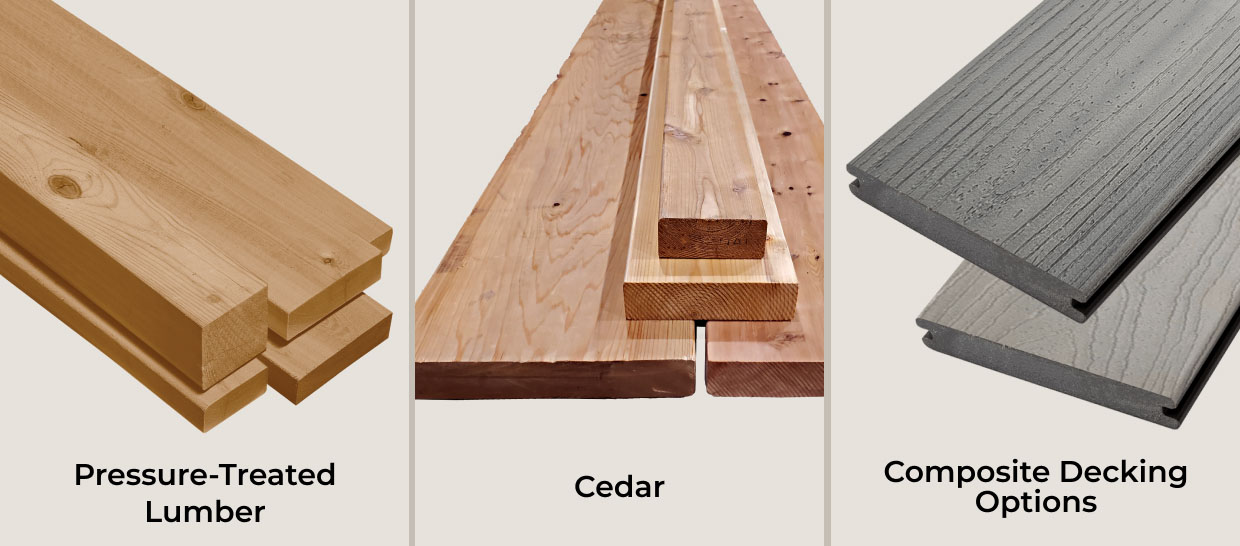
Deck Budget Planning and Cost-Saving Strategies
Building a deck involves not just choosing the right materials but also accurately planning your budget and deciding on the installation method. Below, we provide guidelines on how to effectively estimate your budget and choose between DIY and professional installation.
When planning a deck, the overall cost includes more than just the price of the boards. Here’s how you can calculate a comprehensive budget:
-
Material Costs
Deck Boards: Depending on your choice between wood, composite, or PVC.
Fasteners and Hardware: Includes nails, screws, and any hidden fastening systems.
Support Structures: Posts, beams, joists, and railings, if applicable.
-
Additional Supplies
Finishes and Sealants: Necessary for protecting wood decks from the elements.
Concrete for Footings: Required for establishing a stable base.
Under Deck Drainage Systems: If you plan to utilize the space underneath the deck.
Decking Extras: Items like post caps and decorative accents.
-
Hidden Costs
Permits: Costs vary by location but are necessary for ensuring your deck is built to code.
Tool Rental: Necessary for specialized tools you may not own.
Delivery Fees: For transporting large quantities of materials to your site.
Waste Removal: Costs associated with disposing of old decking material or construction debris.
-
Labor Costs
Professional Installation: If you choose not to go the DIY route you’ll have to factor in labor costs.
Design Fees: If you use a professional to design your deck there will be additional fees.
-
Contingency Fund
Unexpected Costs: It’s wise to set aside an additional 10-20% of your total budget to cover unforeseen expenses during the construction process.
By including these categories in your deck budget, you can develop a more accurate financial plan for your deck project. This comprehensive approach helps ensure that you are prepared for both expected and unexpected costs, making the building process smoother and more predictable.
DIY vs. Professional Deck Installation
Many homeowners believe that the DIY route for deck building is a financially wise choice over hiring a professional deck builder, but that is not always the case. It’s important to carefully weigh the pros and cons of each before making the right decision.
DIY Deck Construction
Pros: Potentially lower cost if you have the necessary skills; a sense of personal achievement.
Cons: Risk of improper installation; costs of tools and potential waste material; more time-consuming.
When to DIY: Ideal for those with carpentry experience or smaller, less complex deck projects.
Professional Installation by Deck Guardian
Pros: Guaranteed quality and efficiency; faster completion; handling of permits and inspections by professionals; long-term cost savings due to better build quality and reduced likelihood of costly repairs.
Cons: Higher initial cost than DIY.
When to Hire Professionals: Recommended for complex designs, larger decks, and when high-quality, long-lasting results are important.
By taking the time to properly estimate your budget and weigh the benefits of professional installation, you can ensure that your deck investment is sound, both structurally and financially. Deck Guardian is here to help guide you through every step, making sure you get the most out of your investment with a beautifully built, durable deck that suits your budget and lifestyle.
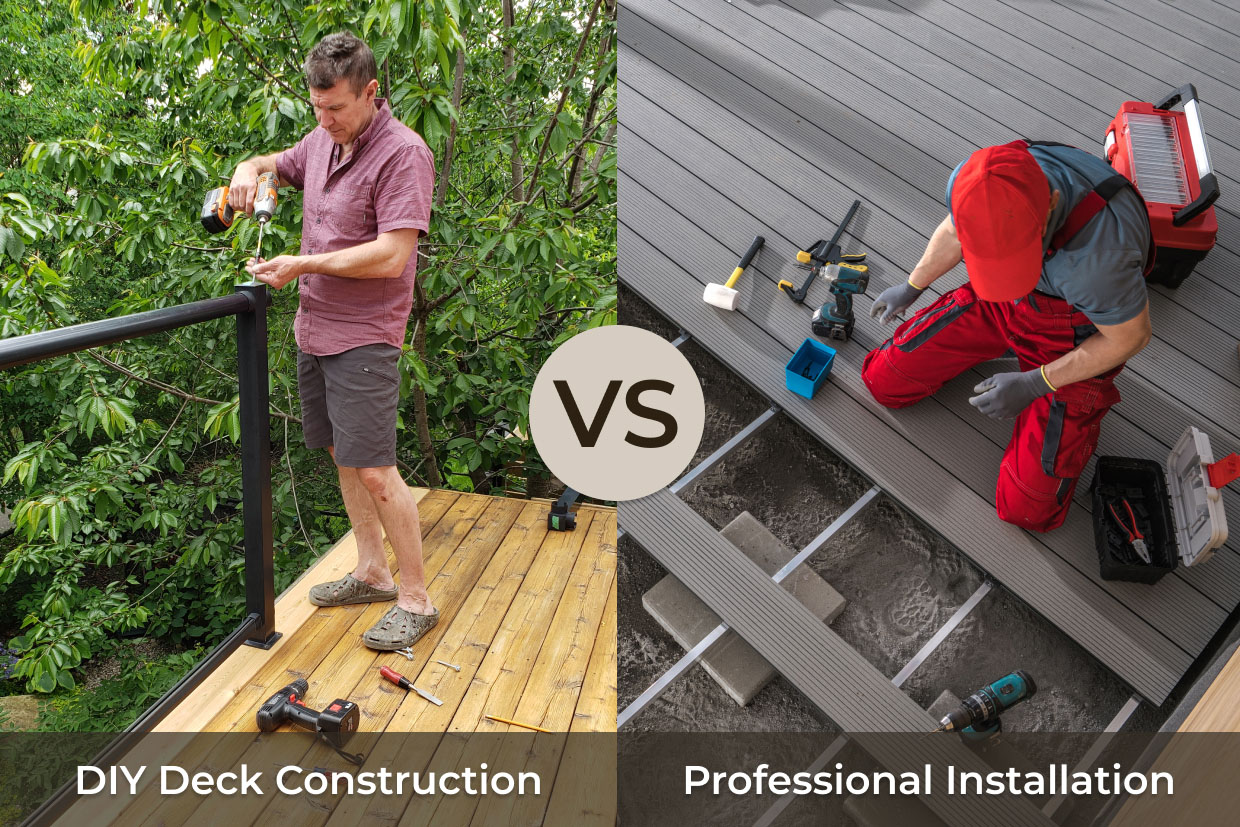
Build Smarter with Deck Guardian
Choosing the most affordable decking materials and planning your budget are key steps in building a deck that meets your needs and stays within your financial boundaries. Remember, hidden costs in materials, maintenance, and potential DIY mishaps can impact the overall affordability of your deck.
At Deck Guardian, we’re here to ensure that your deck-building experience is smooth, cost-effective, and tailored to your specific needs. Don’t navigate the complexities of deck planning alone. Contact us for personalized advice, detailed cost breakdowns, and professional guidance. Let’s discuss your deck project today and start building a beautiful, budget-friendly deck you’ll enjoy for years to come.


